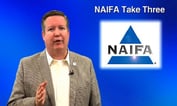A General Electric Company executive, Steve Winoker, has posted a detailed rebuttal of allegations that the company has misled investors about the reserves at its long-term care insurance (LTCI) reinsurance business.
Harry Markopolos — a forensic accountant who openly emphasizes in a disclosure that members of his company may make a profit if the price of GE’s stock falls — says that the GE LTCI reinsurance business now has about $19.9 billion in reserves.
(Related: 5 Markopolos GE Long-Term Care Insurance Report Highlights, for Agents)
The unit needs to add $18.5 billion to its LTCI reinsurance reserves to get them up to an adequate level, and the unit will also have to take an additional $10.5 billion charge in the next few years in response to a pending accounting rule change, Markopolos says in a report released Thursday.
The Kansas Insurance Department, the unit’s lead regulator, responded Monday with a statement calling the Markopolos “simplistic.”
Winoker, who is GE’s vice president of investor communications, has replied with a note addressed to GE’s investors.
A copy of the note is available here.
Winoker’s Views
Winoker writes in his note that GE believes that its current LTCI reinsurance reserves are well-supported for the company’s portfolio characteristics.
“Our future liabilities depend on variables that will play out over decades, not years, and are dictated by rigorous testing processes, sound actuarial analysis, and the application of regulatory and accounting rules,” Winoker writes.
Winoker says the GE LTCI reinsurance business is much different from a direct writer.
In many cases, Winoker says, the reinsurance business has contracts that call for the business to share the cost of claims with the direct writers, rather than assuming the full burden itself.
“The correct analysis of insurance reserves comes from an extensive annual process where key assumptions informed by claim experience are updated and reviewed in conjunction with independent actuarial partners, auditors and regulators,” Winoker says.
Questions and Answers
Winoker then goes on to address questions GE has received about the LTCI reinsurance business.









 August 20, 2019 at 12:44 PM
August 20, 2019 at 12:44 PM












